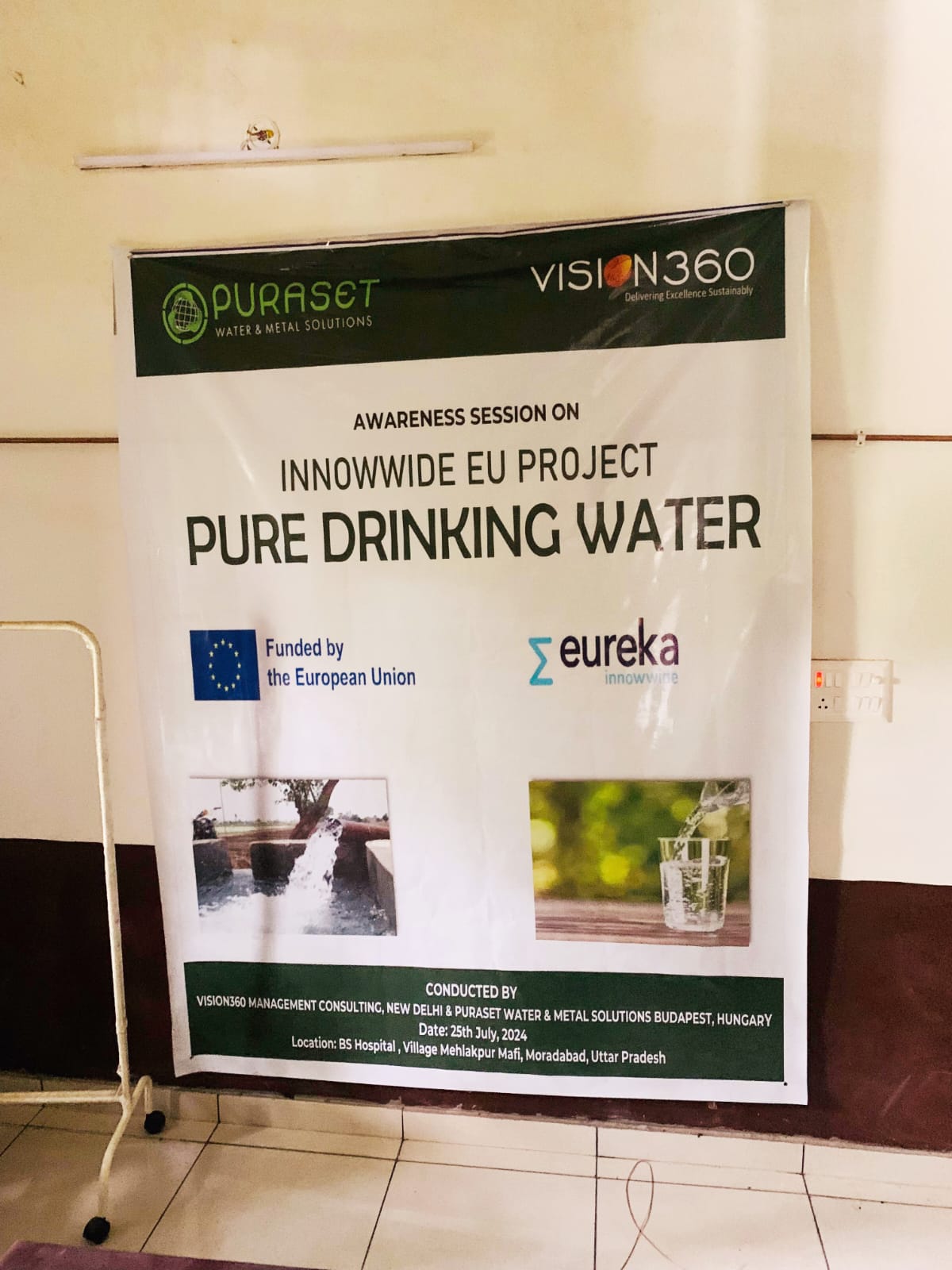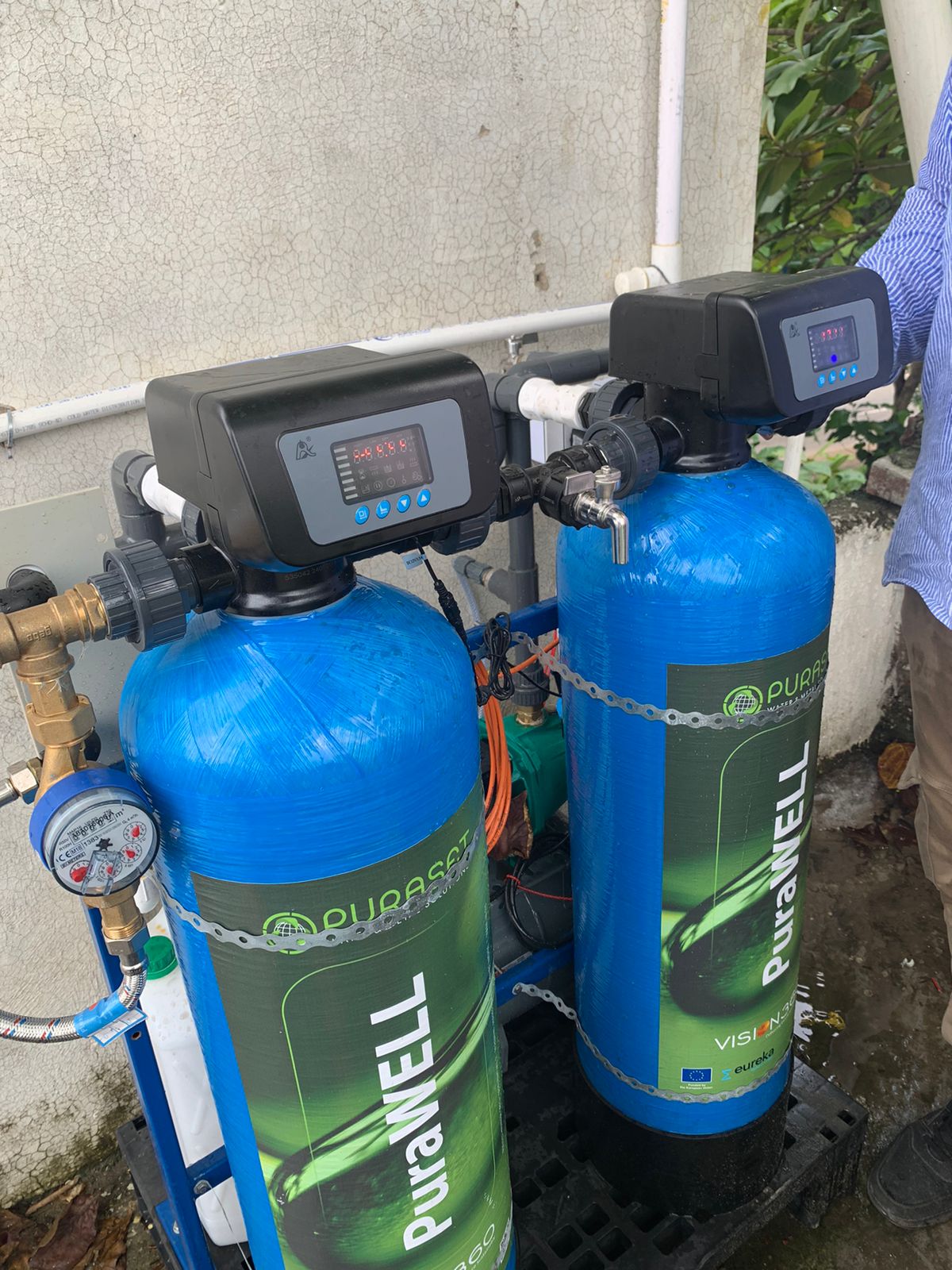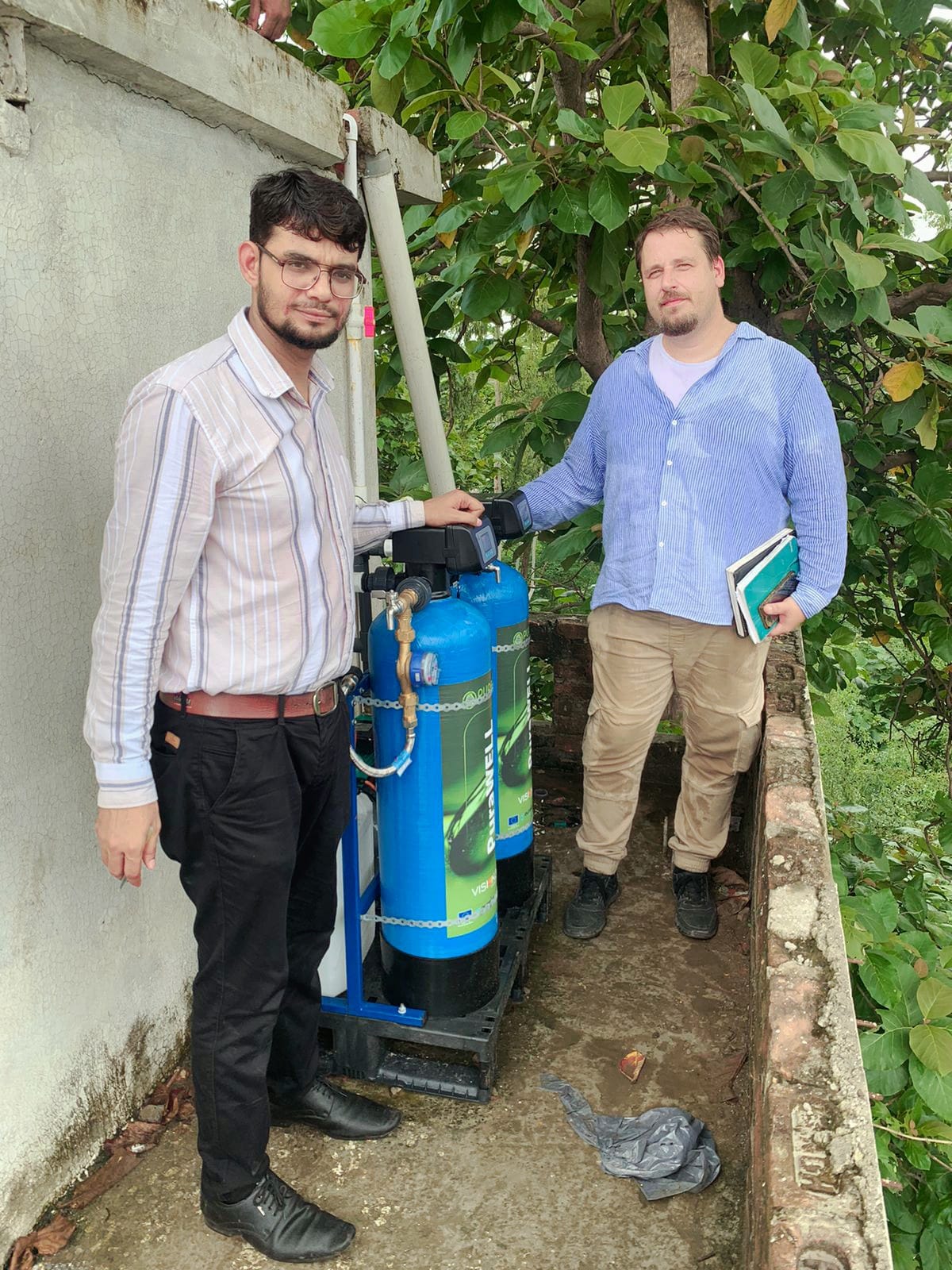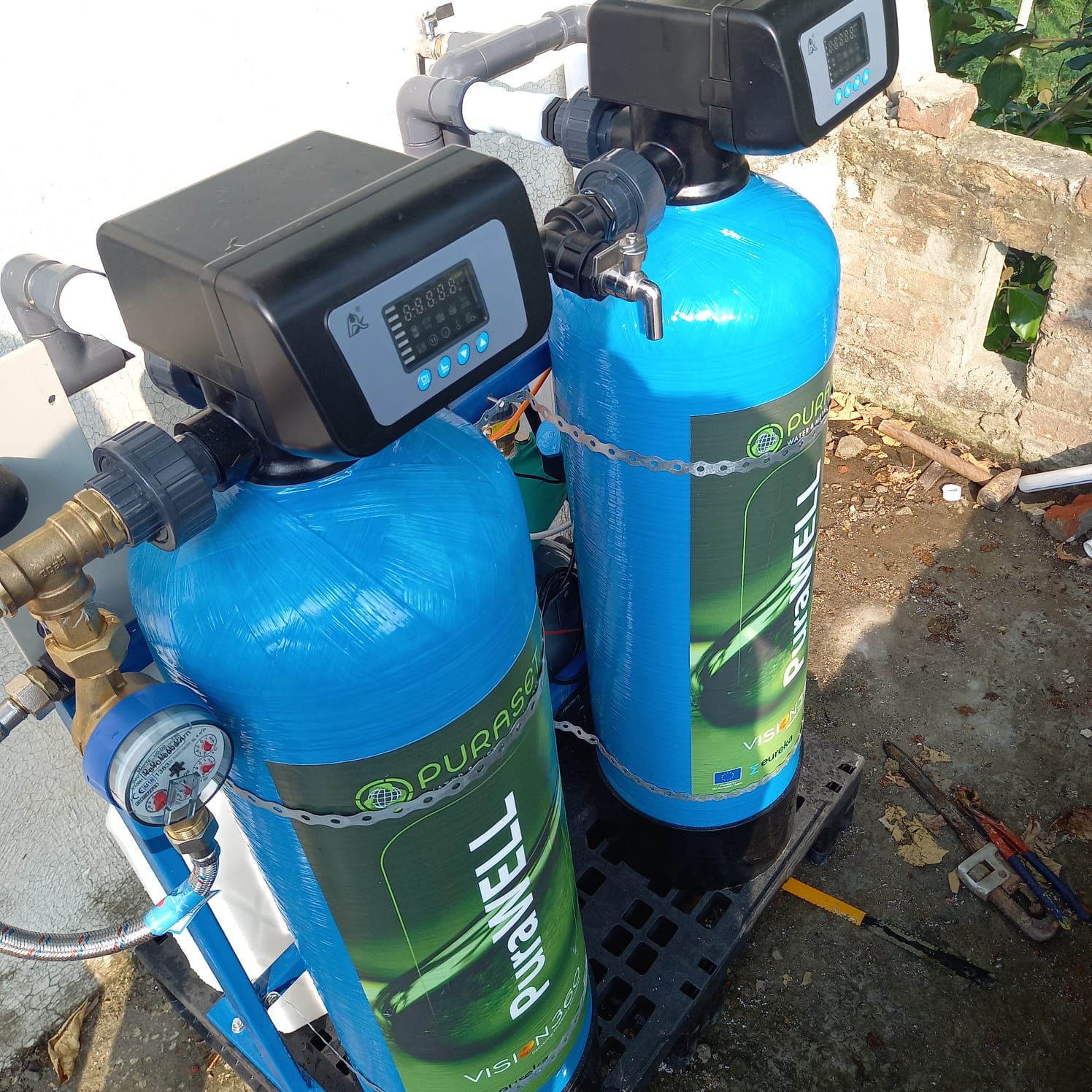AsFreeWATER in action
Content
An up-to-date report on the current situation regarding our project under Eureka Innowwide call ((2023-19882/IW/CALL 2 – AsFreeWATER)) funded by the European Union as part of the European Partnership on Innovative SMEs.
Following the positive decision on our application, operational discussions and work have started with VMC Ltd., our Indian partner.
Our project aims to provide arsenic-free healthy drinking water with AsMET regenerable adsorbent-based PuraWELL system for two arsenic-affected rural locations in India.
Of the two PuraWELL devices delivered to India as part of our pilot project, one was installed in Mehlakpur Mafi at the BS Hospital and the other in a Residential building in Moradabad.
The systems are currently being tested and validated. This is a three-month process during which the drinking water is extracted from the equipment for certified lab testing. Results will be monitored throughout the process.
The first test results were very encouraging, so we expect to end the test period with excellent results, demonstrating the competitive advantage, efficiency, and sustainability of our product.
We involve the local experts in the operation of the systems right from the testing phase, to ensure not only simple installation but also the long-term operation of the equipment.
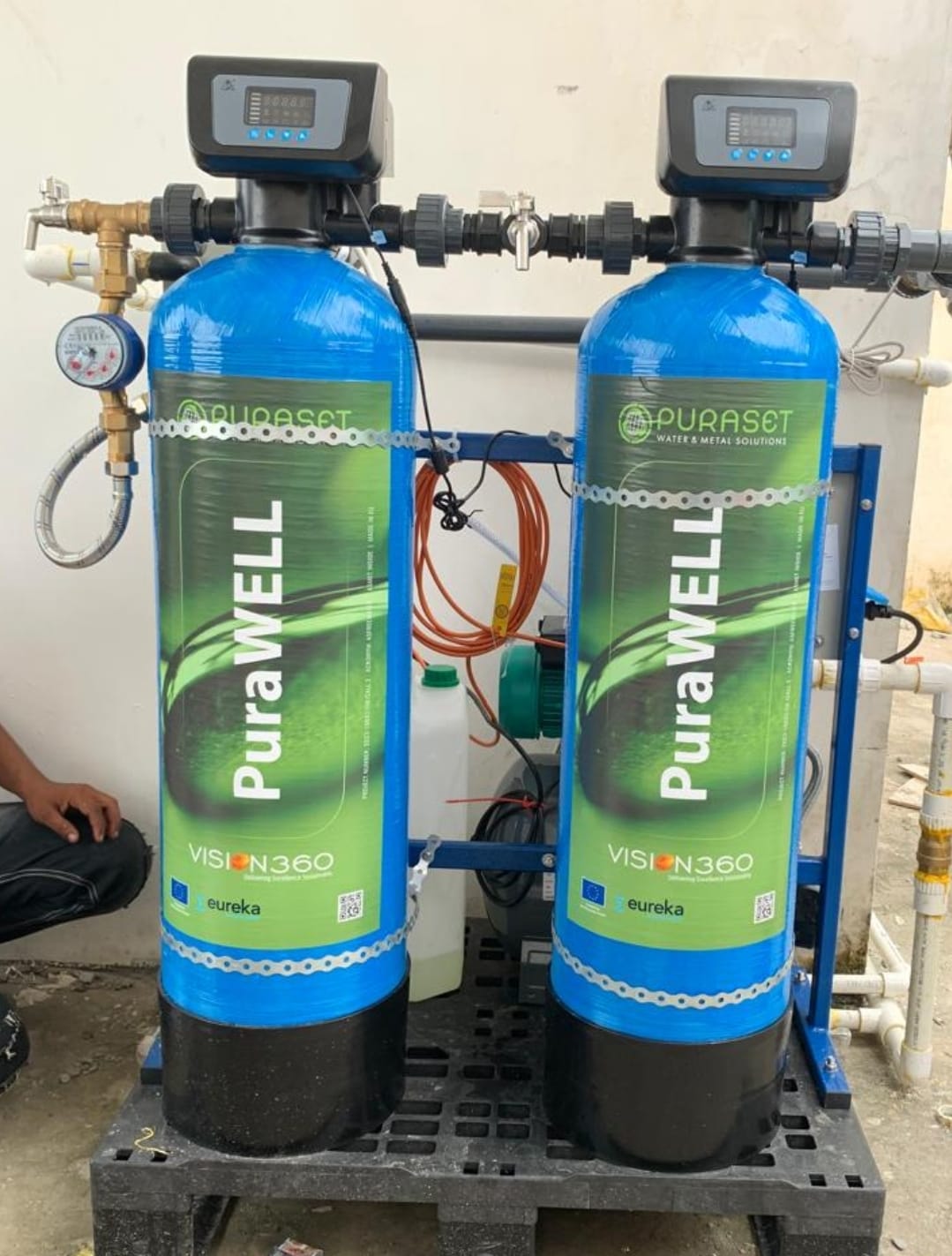
Once the testing period finishes (in October 2024), the final workshop of the project will be held at the Hungarian Embassy in New Delhi introducing the results and recommendations for application to the relevant water authorities, communities, stakeholders, private water providers, and technology providers.
We will keep you informed about the progress of the project.
For further information please contact: csilla.kopornyik@puraset.hu
Arsenic-removal tanks
Intro
Our company placed its PuraWell arsenic-removing tank at the kindergarten of Rinyaújlak fitted to a wall fountain.
Properties
- Subtitle
Purawell system for clean drinking water
Intro
Our company handed over 15 pieces of AsMet arsenic removal equipment with a capacity of 12 m3/ d to Subotica Waterworks
Properties
- Subtitle
Development of control rod used in reactor technology
Intro
In 2019, we developed a reactor technology control rod for the Eötvös Lóránd Research Network - Energy Science Research Center, in which the desired parameters were achieved by blasting, while the gas tightness was achieved by electron beam welding.
Properties
- Subtitle

